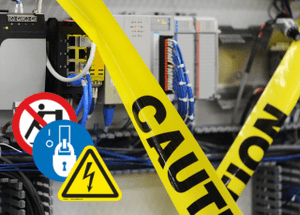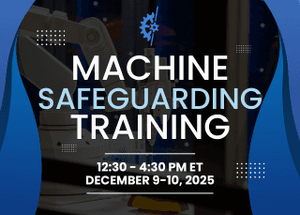Is Over Warning the Same as No Warnings at All?

Is Over Warning the Same as No Warnings at All?
Manufacturers have a duty to warn and instruct
end users regarding potential dangers and proper use of a product, while taking
into account any assumed knowledge that the intended users should have along
with reasonable dangers of their product. However, the idea of reasonable dangers
can sometimes lead to something known as “over warning.” This means that
manufacturers will affix their products with so many warning labels and
information that the operator or user is left confused as to which one is
actually important – and by default ignore all or most of them.
Dilution in Over Warning
An adequate warning label or sign typically
includes all relevant information essential to make use of the product safely.
A warning should contain information to inform an individual about potential
hazards and the opportunity to change their behavior to prevent undesirable
consequences. However, a warning is unlikely to be effective unless the end
user, at a minimum, reads the warning, understands the information, and changes
their behavior in order to comply with the warning.
The increasing trend toward multiple warnings also has the subtle effect of dulling down the strength of more important ones. It’s not clear why this warning dilution occurs; the warnings could be averaged together and they may be less likely to remember the one important warning amidst all the lesser ones. Another main reason that people are thought to not heed multiple warnings is the increased reading associated with text heavy labels and signs. This had led to an increase in popularity with ISO 7010-based symbol only labels and signs – universal to all languages and understood with little room for confusion.
Preconceived Safety is a Danger
Viewer and operator history with the product or
environment strongly affects their perception of danger. This means that more
experienced workers used to working in either warnings-lax or heavy
environments may feel that they understand the machinery well enough that they
aren’t as concerned when a similar but new piece of equipment is brought in –
even if it has new dangers. The greater the experience with no negative
outcome, the lower the level of perceived danger. This is commonly known as the
“familiarization effect,” where people quit paying attention to uninformative
input. This is particularly impactful in the scenario of warnings addressing
highly unlikely or theoretical hazards, which often causes warnings to be seen
as “false alarms.” The effect can be either specific to a particular product or
machine, or to generalize to all similar equipment. One of the most unfortunate
ironies of warnings is that the more experienced and skilled the viewer, the
stronger the familiarization effect and the more likely that the warning will
be ignored. This has been found across a wide variety of products, including
automobiles, computers, power tools, and other devices. Not only are such
people less likely to heed warnings, they’re also less likely to even notice
them.
Your Role as a Manufacturer
Deciding when to warn should be based on careful
consideration of the likely effectiveness and potential impact of the warning.
Attempting to address every possible injury scenario with a warning does not
enhance overall product safety, especially as human behavior specialists across
the globe have even proven so. It’s not easy for manufacturers to provide
warnings that meaningfully increase safety, avoid risks associated with
“over-warning,” and minimize liability in potential litigation all at once.
While there is no way to completely avoid liability and protect all end users
in every possible scenario, concision is key for warnings in both selection and
placement.
One of the best ways to avoid confusion with too many labels on one product is to implement and have ready a comprehensive machinery user manual that can be accompanied by an on product “read manual” label. In fact, the ANSI Z535.4 standard allows for this practice of referring to another source off the machine itself by stating in Section 6.5.2: “When detailed instructions, precautions, or consequences require lengthy verbiage, it shall be permissible to refer the user to the proper instruction manual”. For more on this standard and how to affix “read manual” labels, you can refer to our safety labeling resource center.
Warning Label and Sign Consistency
When it comes to product safety warnings and determining the most
important hazards to highlight on your machinery equipment, our consulting
services offer a way to help. Our warning label reviews and machine risk assessments are a part of our services designed for helping to reduce liability and
increase safety for original equipment manufacturers and end users. Our labels
and signs
are ANSI/ISO standards compliant, and offer options for customization in text, symbols, and sizing to best fit your needs.



